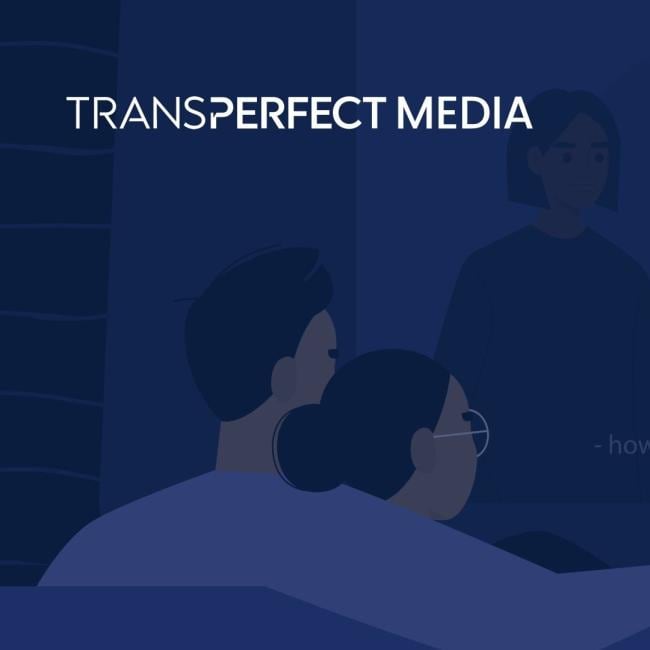The Voice-Casting Process: How to Prepare for and Perform in a Voice-Acting Audition


So, your resonant, compelling, and versatile voice has successfully landed you a voice-casting opportunity—congratulations! Still, performing at an audition is a hurdle in itself, and leaving the audition with the prize in hand is even more challenging.
So, what exactly can you expect in a voice casting, and how can you best prepare for one?
In this blog, we will discuss the following:
- What castings are & why they are important
- The most common types of castings
- Practical tips for preparing for an audition
What Is a Voice Casting?
Think of the voice-casting process as a job interview for an acting job.
It is an important pre-production process that often involves various “rounds” of voice-acting auditions for casting directors to select and hire the best actor to voice a particular character in a film, television series, video game, or other media.
Casting is one of the most critical behind-the-scenes processes in audio-visual production. It provides the casting team with all the information they need to identify the actors who can most effectively and convincingly step into a particular role and create the production as they envision it. After all, actors are the ones who bring the script and concept to life through their voices!
So, what are the different types of castings, and what can you expect to do for each of them?
Three Types of Castings:
There are predominantly three types of castings that you may be asked to prepare for. These are library castings, dubbed castings, and live castings.
The type of casting chosen by the casting team usually depends on the type of project being produced, and they vary in terms of complexity, location, and preparation.
Library Castings:
One of the simplest types of voice casting is when the actor submits samples from previous voice-acting projects to a casting team.
Think of this as submitting a creative portfolio, an audition tape, and a business card all in one—it should be a short and impactful audio or video clip featuring standout performances from past projects that closely match the character you are auditioning for. The industry standard suggests providing three voice samples per character.
While the samples and projects that a voice actor has previously worked on may not be similar to the character they are auditioning to play, library casting provides casting directors with a good indication of the actor’s spectrum of voice-acting abilities, including the range of their voice placements, age, attitudes, and delivery.
Casting directors will usually ask you to submit your completed audio or video file through their designated submission platform by a specific deadline, typically free of charge. These pre-recorded samples can reach clients within a few days, ensuring a swift approval process and reducing your waiting time to a minimum!
Dubbed Castings:
A sister to library casting, dubbed casting is another form of voice casting that offers a unique glimpse into an actor's suitability for a specific role.
Unlike library casting, where actors showcase their best voice-acting moments, dubbed casting involves submitting a short video file, approximately 20 seconds long, featuring a variety of scenes and lines provided by the client for the specific character being cast. The content provided by the client is called a “voice test kit” (VTK).
For this type of casting, your task is to record the lines in context with the supplied content, demonstrating to the client how you could effectively perform the role. It is an innovative approach to casting that offers a more accurate impression of the final performance that will be integrated into the finished product.
It is important to note that dubbed casting typically has a charge per submission, reflecting the comprehensive nature of the service and the tailored attention given to each role in the casting process.
Live Castings:
Depending on the casting team’s budget, timeline, and production demands, you may be asked to audition in a live casting. It is here that you will be required to showcase your capabilities and flexibility to make your presence shine brightly under the spotlight!
A live casting is a voice-casting process in which voice actors audition for roles in real time, typically in front of casting directors, clients, and other production decision-makers. Unlike traditional voice-acting auditions where actors simply submit their demo reels or videos, a live casting requires actors to perform their given lines and characters on the spot, either in person or remotely through video conferencing. While this may sound daunting, with the proper preparation and a keen ability to adapt to feedback and direction, voice actors can truly shine during live castings and demonstrate their versatility and skill, just as they would in a demo reel!
One valuable piece of advice shared by Jacques Barreau, TransPerfect Media's Dean of Dubbing, is to approach a live casting with a solid grasp of the character you are portraying. He mentions that you should remember to "pause, gather your thoughts, and then proceed," rather than rushing through the performance blindly and potentially missing the nuances that make a character truly come to life.
It is also important to note that during live castings, clients will typically provide clear guidance on what they are specifically looking for, helping you align your performance and delivery with their expectations and vision.
Top Tips for Preparing for an Audition:
Whether your casting is in the form of a video, remote session, or in-person meeting, these tips will get you through your next audition.
- Be prepared: Study the script and plan your performances as soon as you can. Consider various aspects of your delivery, including tone, inflection, accent, and emotion. Really take on your character for a believable performance.
- Warm up your voice: Voice acting relies on the quality of your voice, so be sure to warm it up. Engage in your favorite elocution exercises, such as vocal glides, blowing raspberries, and facial stretches.
- Hydrate: Drink several glasses of water before your audition to make sure your vocal cords are well lubricated. We also suggest steering clear of caffeine and alcohol, as they can dehydrate your throat.
- Arrive early: For in-person auditions, arriving ahead of your scheduled performance time is considered a good practice. Doing so not only showcases your enthusiasm and professionalism to the casting team but also provides you with the opportunity to engage in warm-up exercises, review your lines, and effectively manage any nerves you may have.
- Follow instructions: While it can be tempting to show off your improvisation skills, casting directors are looking for actors who can take direction and respond to feedback. Be creative with your part and develop distinctive vocal traits while staying within the guidelines provided by the text and notes.
Key Takeaways:
Voice casting is not an easy process for voice actors, and it requires thorough planning, preparation, and confidence. However, by familiarizing yourself with the casting process, incorporating these tips into your preparation, and giving your utmost in both your work and auditions, the next voice-acting part may just be yours!
To learn how you can become a voice talent, visit https://dubbingacademy.transperfect.com/ or email us at DubbingAcademy@transperfect.com.



